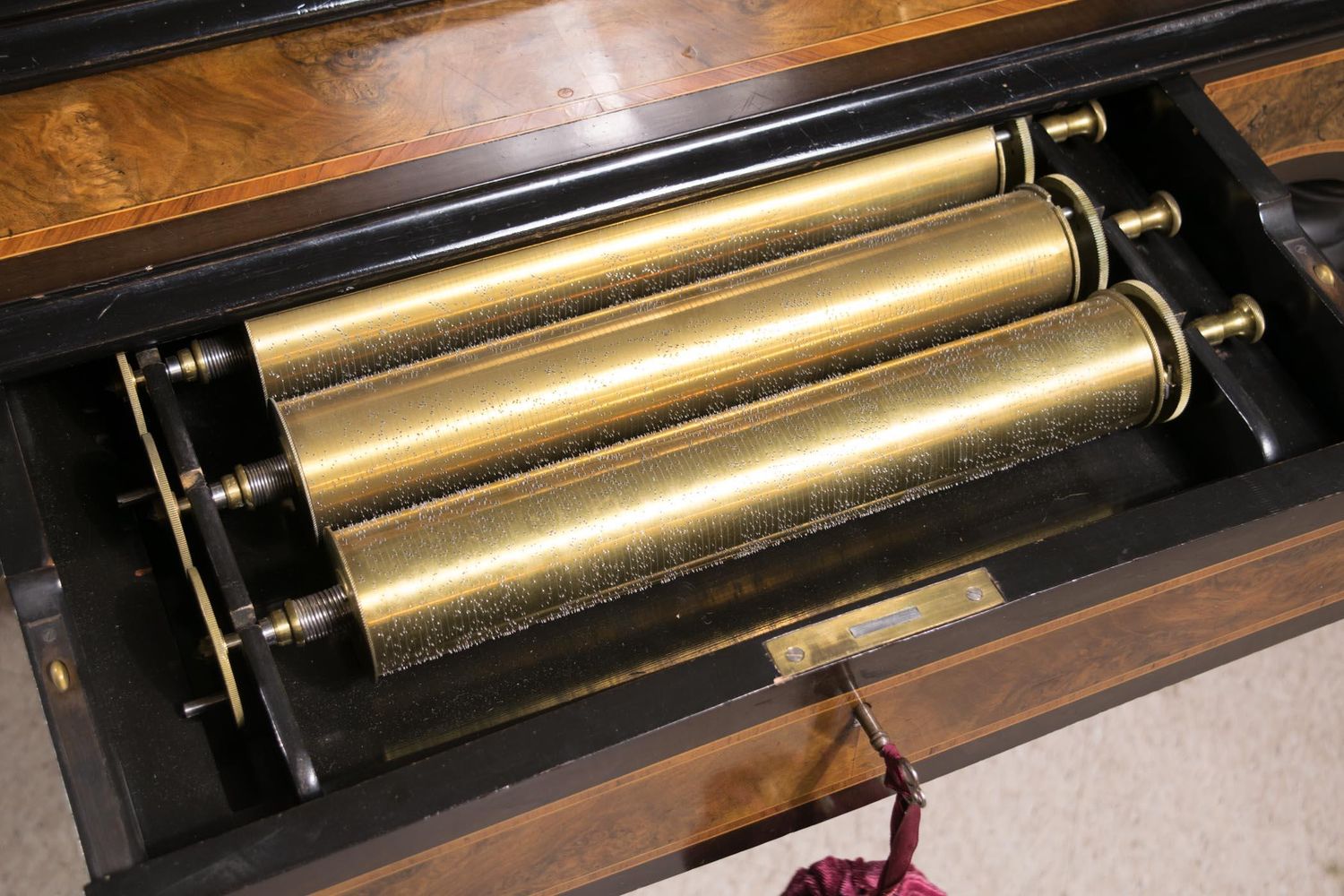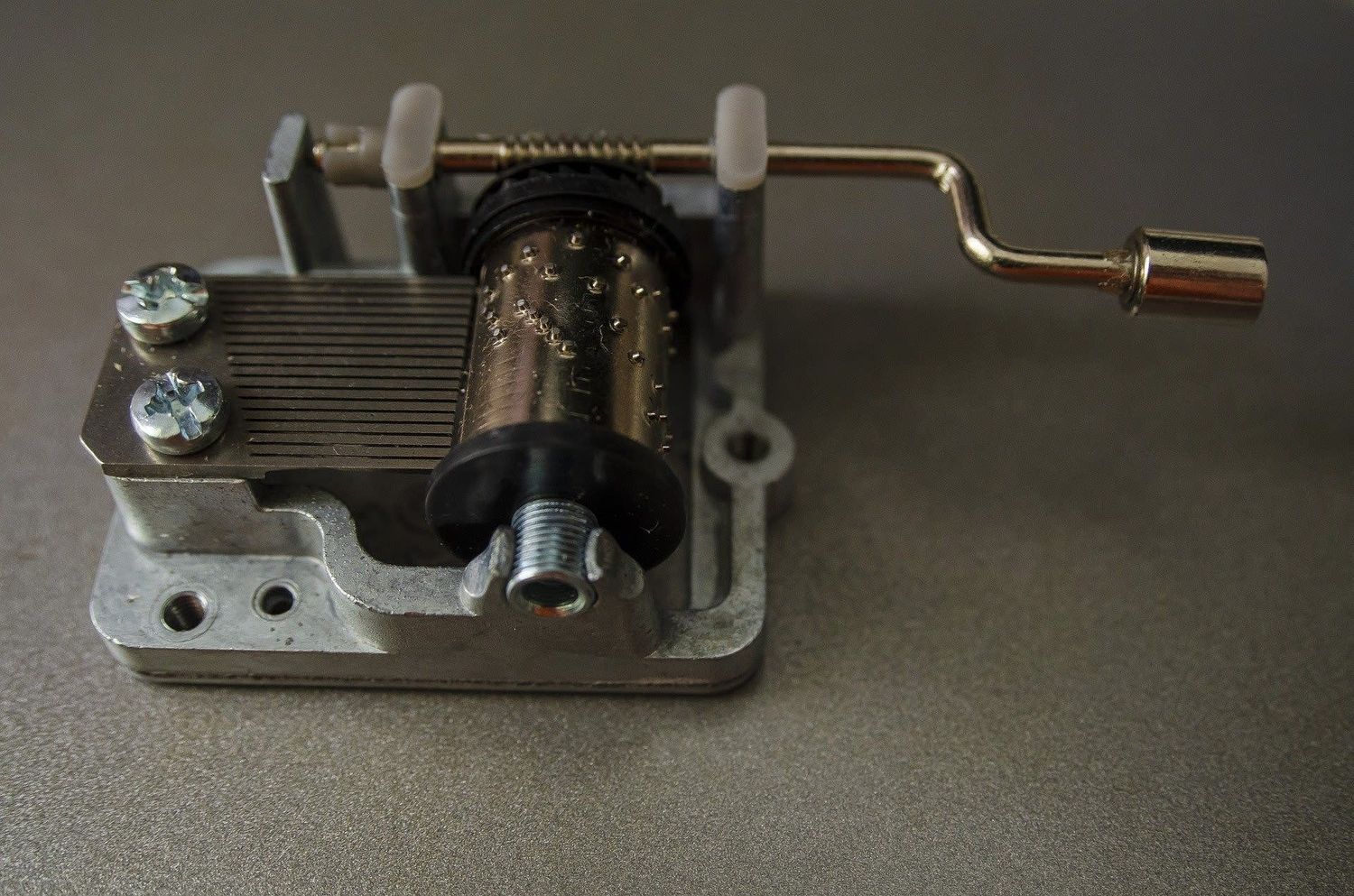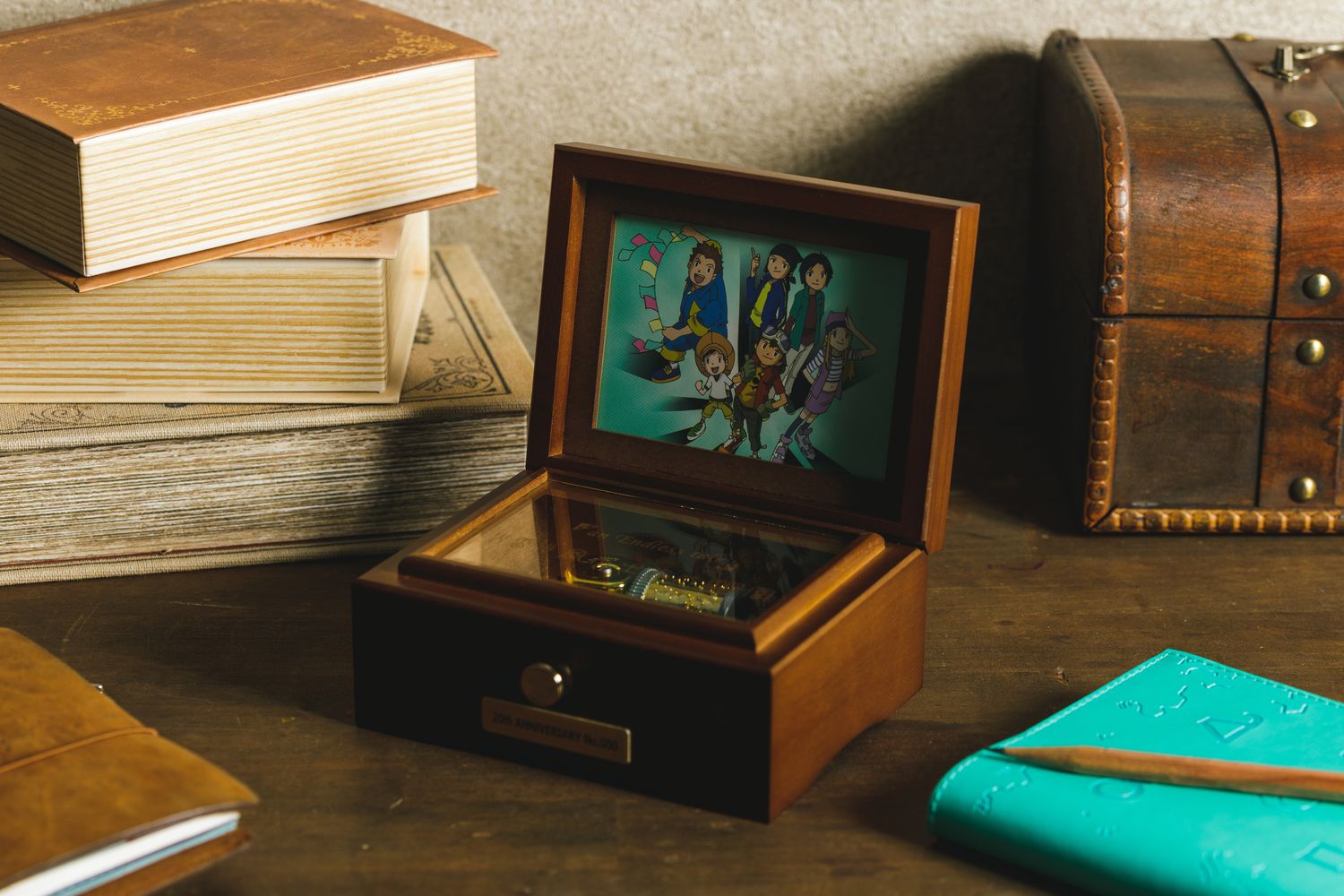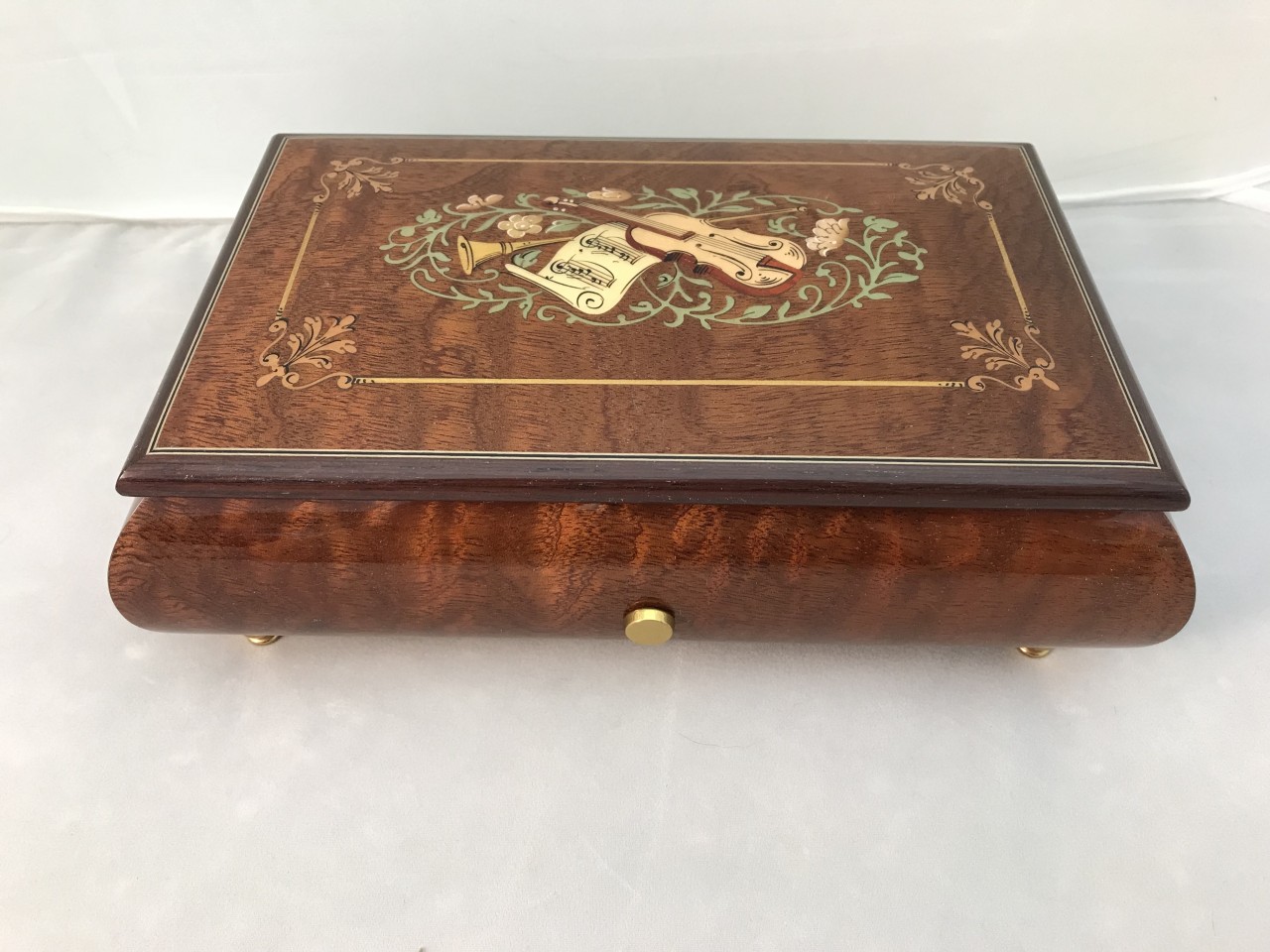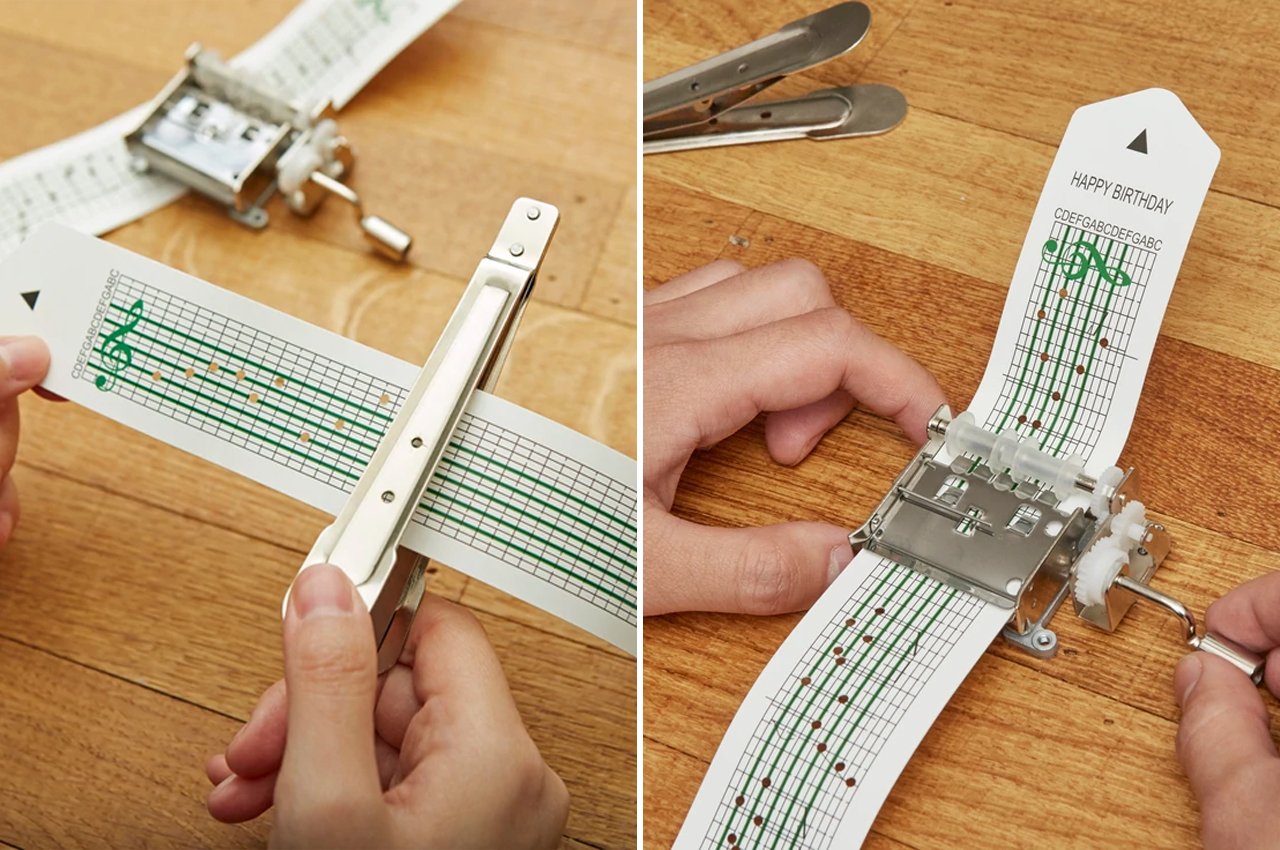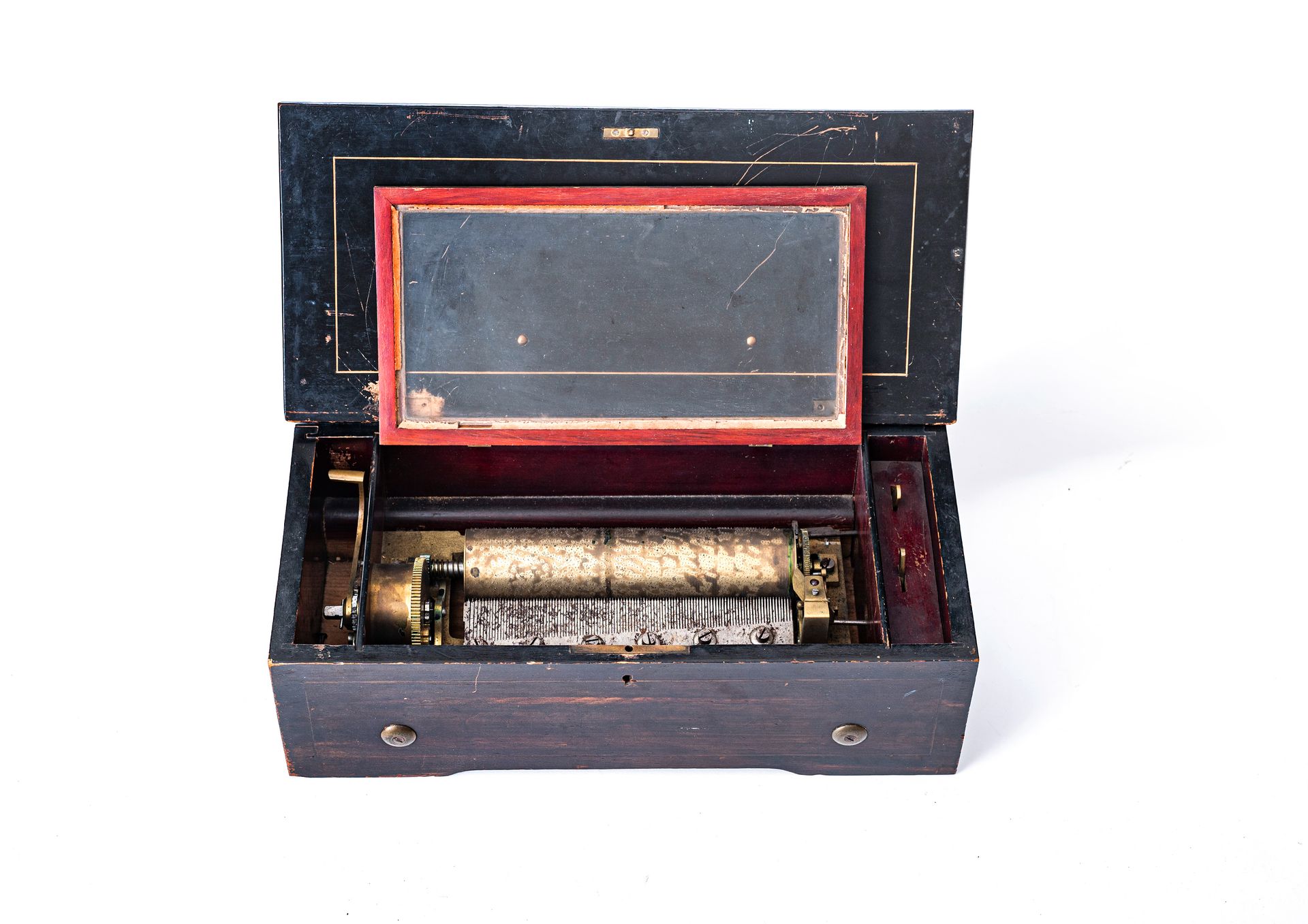Home>Devices & Equipment>Music Box>How To Operate A Swiss Music Box Circa 1875
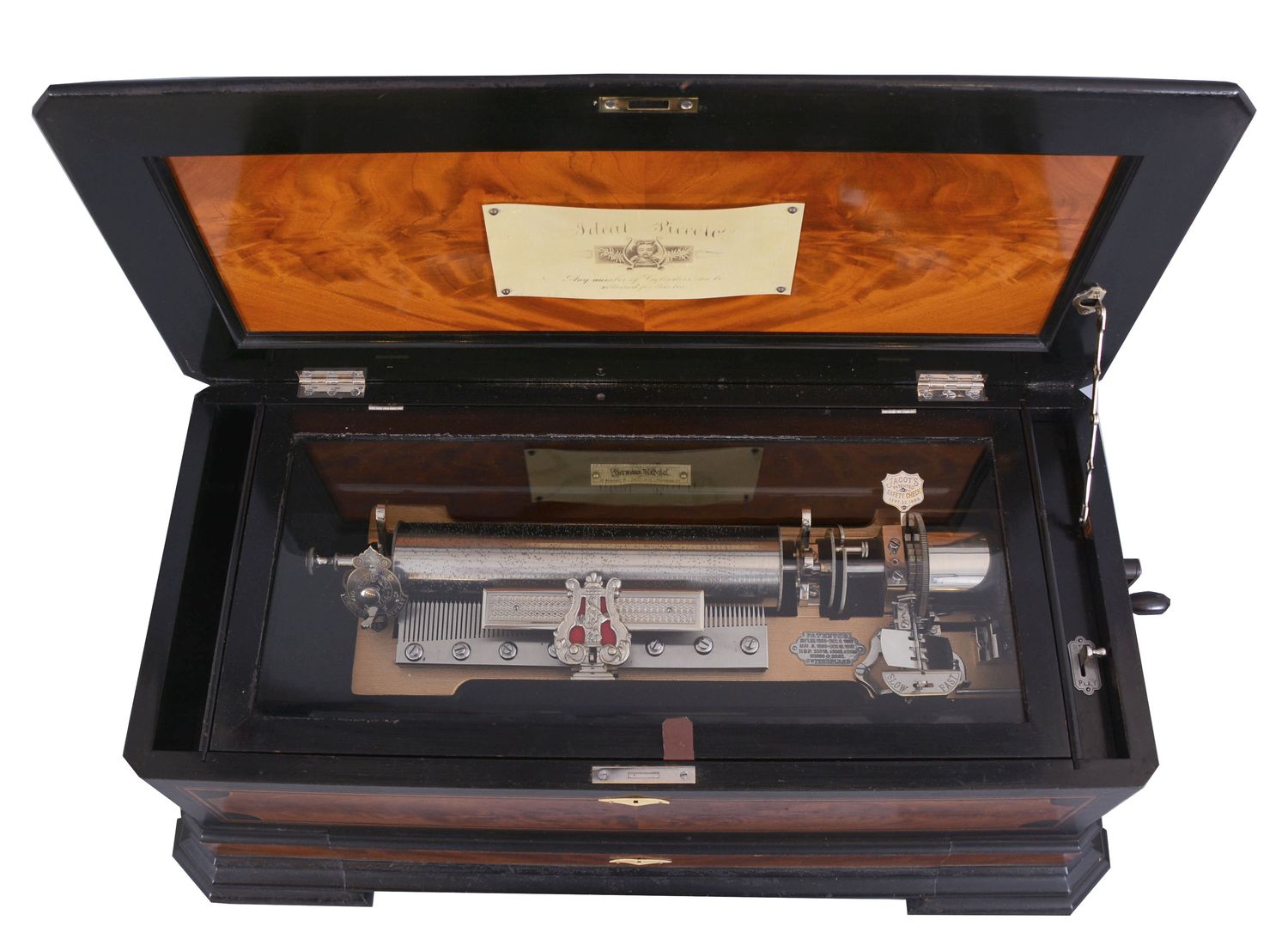

Music Box
How To Operate A Swiss Music Box Circa 1875
Published: January 12, 2024
Learn how to operate a Swiss music box from circa 1875. Discover the enchanting melodies and intricate mechanisms of this vintage music box.
(Many of the links in this article redirect to a specific reviewed product. Your purchase of these products through affiliate links helps to generate commission for AudioLover.com, at no extra cost. Learn more)
Table of Contents
Introduction
Welcome to the world of Swiss music boxes! These exquisite pieces of craftsmanship have been delighting people for centuries with their beautiful melodies and intricate mechanisms. Made popular in the 19th century, Swiss music boxes continue to capture the imagination of enthusiasts and collectors around the world.
In this article, we will take a closer look at the mesmerizing world of Swiss music boxes. We will explore their history, understand the components that make them work, learn how to operate them properly, and discover how to maintain and preserve these precious heirlooms.
Whether you are a music box enthusiast, collector, or simply curious about the artistry behind these magical instruments, this article will provide you with a comprehensive guide on how to operate and care for a Swiss music box.
So, let’s embark on a journey of enchantment as we explore the world of Swiss music boxes and learn how to unlock their harmonious melodies.
Brief History of Swiss Music Boxes
The origins of music boxes can be traced back to ancient times, with the invention of mechanisms that produced simple melodic sounds. However, it was in the 18th century that the true precursor to the Swiss music box emerged. Pierre Jaquet-Droz, a Swiss watchmaker, created intricate musical automaton devices that fascinated audiences with their lifelike movements and melodious tunes.
It was in the early 19th century, however, that the Swiss made significant advancements in the development of music boxes. Fueled by the Swiss reputation for precision engineering and craftsmanship, music box makers began creating intricate mechanisms that could play multiple melodies on a rotating cylinder or disc.
Switzerland quickly became the hub of music box production, with talented artisans and craftsmen honing their skills to create these delicate and mesmerizing instruments. The music boxes were not only functional but also adorned with beautiful engravings, inlays, and intricate designs. They became highly sought-after luxury items among the upper class and aristocracy.
During the mid-19th century, music box production reached its peak, with Swiss manufacturers exporting their creations to countries around the world. The popularity of music boxes continued well into the 20th century, with new designs and innovations constantly emerging.
However, with the advent of modern technology, the demand for traditional music boxes began to decline. Today, Swiss music boxes are cherished as collectibles and treasured heirlooms, representing a bygone era of masterful craftsmanship.
Despite their historical significance, Swiss music boxes are still relevant today, captivating music enthusiasts and collectors with their timeless beauty and melodic charm. Now, let’s delve into the inner workings of these exquisite creations and understand the components that bring them to life.
Components of a Swiss Music Box
A Swiss music box is a complex and intricate instrument, comprised of various components that work together to produce its enchanting melodies. Let’s explore the key components that make up a typical Swiss music box.
- Music Mechanism: At the heart of the music box is the music mechanism, which consists of a rotating cylinder or a disc with strategically placed pins or metal protrusions. As the cylinder or disc is turned, the pins or metal protrusions pluck the tuned teeth of a steel comb, creating the distinctive musical notes.
- Steel Comb: The steel comb is an essential component of the music mechanism. It consists of a series of tuned metal teeth of varying lengths. When the pins or protrusions on the cylinder or disc pluck the teeth, they produce musical notes with different pitches, creating the melody.
- Tune Selection: Many Swiss music boxes have a selection mechanism that allows you to choose from a variety of tunes. The tune selection mechanism can be as simple as a lever or a switch that activates different cylinders or discs, each containing a specific tune.
- Governor: The governor is a regulating mechanism that controls the speed at which the cylinder or disc rotates. It ensures a consistent and smooth melody by preventing the mechanism from spinning too fast or too slow.
- Spring Barrel: The spring barrel is a cylindrical container that houses a coiled spring. When the spring is wound up, it stores potential energy. As the spring unwinds, it releases the energy, causing the cylinder or disc to rotate and play the music.
- Revolving Cylinder or Disc: Swiss music boxes feature either a revolving cylinder or a disc. The cylinder is adorned with pins or protrusions that pluck the teeth of the steel comb, while the disc has holes that correspond to different musical notes. As the cylinder or disc rotates, the pins, protrusions, or holes activate the steel comb, producing the desired melody.
- Case: The case serves as the protective and decorative housing for the music box. It can be made from a variety of materials, such as wood, metal, or even precious materials like gold or silver. The case often features intricate engravings, inlays, or carvings, adding to the aesthetic appeal of the music box.
These components work in harmony to create the magical melodies that emanate from a Swiss music box. Understanding these components is crucial for operating and maintaining a music box effectively. In the next section, we will delve into the functions of these components and learn how to operate a Swiss music box.
Understanding the Functions of the Different Components
To truly appreciate the mechanics behind a Swiss music box, it’s important to understand the functions of its various components. Let’s explore how each component works together to create the mesmerizing melodies.
- Music Mechanism: The music mechanism is the heart of the music box. When the cylinder or disc is set into motion, the pins or protrusions on its surface pluck the tuned teeth of the steel comb, producing musical notes. The arrangement and length of the pins or protrusions determine the sequence and pitch of the notes, creating the melody.
- Steel Comb: The steel comb is responsible for producing the musical tones. Each tooth on the comb is tuned to a specific pitch, and when plucked by the pins or protrusions on the cylinder or disc, it vibrates, producing the desired musical note. The length and arrangement of the teeth determine the pitch and sequence of the notes played.
- Tune Selection: The tune selection mechanism allows you to choose the desired melody to play. It may involve adjusting a lever, sliding a switch, or turning a dial to activate a particular cylinder or disc with a specific tune. Some music boxes have interchangeable cylinders or discs, allowing you to change the tune according to your preference.
- Governor: The governor controls the speed at which the cylinder or disc rotates. It consists of two weighted arms or balls that spin as the music box plays. The spinning motion helps regulate the rotation speed of the cylinder or disc, ensuring a steady and consistent melody. If the mechanism rotates too slowly, the musical notes may sound distorted, while a fast rotation may result in a rushed and chaotic melody.
- Spring Barrel: The spring barrel houses a coiled spring, which stores potential energy when wound up. As the spring unwinds, it releases the stored energy, causing the cylinder or disc to rotate. The spring’s tension determines the duration and speed of the music. When the spring fully unwinds, the music will stop, indicating the need to wind it up again.
- Revolving Cylinder or Disc: The revolving cylinder or disc is the platform that holds the pins, protrusions, or holes responsible for activating the steel comb. As the cylinder or disc rotates, these mechanisms engage with the teeth of the comb, producing the musical notes in the predetermined sequence and pitch. The speed and direction of the rotation directly affect the tempo and melody of the music.
- Case: While not directly involved in the mechanics of the music box, the case serves as both a protective covering and a decorative element. It shields the delicate mechanisms from dust and damage, ensuring their longevity. Additionally, the case often showcases exquisite craftsmanship through engravings, inlays, or carvings, adding to the aesthetic appeal of the music box.
Understanding the functions of these components provides a deeper appreciation for the intricate workings of a Swiss music box. In the next section, we will explore how to operate a music box properly to enjoy its captivating melodies.
Handling and Operating a Swiss Music Box
Operating a Swiss music box requires a delicate touch and proper care to ensure its smooth functioning and longevity. Here are some essential guidelines for handling and operating a Swiss music box:
- Handle with Care: Swiss music boxes are delicate instruments, so it’s important to handle them with care. Avoid rough handling, dropping, or placing heavy objects on top of the music box to prevent damage to its delicate components.
- Keep away from Moisture: Moisture can be harmful to the delicate mechanisms of a music box, leading to rust or corrosion. Keep the music box away from humid areas, such as bathrooms or kitchens, and avoid exposing it to direct sunlight, as extreme heat can warp the wooden case or fade its colors.
- Wind-Up Regularly: To operate a music box, you need to wind it up. Look for the winding key, usually located on the bottom or the side of the case. Insert the key into the winding hole and turn it in a clockwise direction. Be gentle and avoid overwinding, as this can damage the spring mechanism. As a general rule, wind the music box until you feel slight resistance, and avoid forcing the key any further.
- Selecting Tunes: If your music box has a tune selection mechanism, such as interchangeable cylinders or discs, carefully choose the desired tune. Refer to the instructions or markings on the music box to understand how to activate the different tunes. Be gentle when making the selection, ensuring the mechanism properly aligns with the chosen cylinder or disc.
- Start and Stop: Once the music box is wound and the desired tune is selected, gently initiate the movement by either flipping a switch or lifting a lever, depending on the design of your music box. The melodic notes should start playing as the cylinder or disc begins to rotate. To stop the music, gently return the switch or lever to its original position. Avoid abruptly stopping the music, as this can strain the delicate mechanisms.
- Listen and Enjoy: Sit back, relax, and listen to the captivating melodies emanating from the music box. Take the time to truly appreciate the craftsmanship and the beautiful harmonies that the instrument produces. Allow the music to transport you to a world of enchantment.
- Regular Maintenance: To ensure the longevity of your music box, perform regular maintenance. Keep the case clean by gently wiping it with a soft cloth. Avoid using harsh chemicals or abrasive materials that can damage the surface. If you notice any issues with the music box’s performance, such as a change in sound or hesitant movement, consult a professional to address the problem.
By following these guidelines, you can handle and operate your Swiss music box with confidence, ensuring its preservation for generations to come. Next, let’s explore how to effectively maintain and preserve your music box.
Maintaining and Preserving a Swiss Music Box
To ensure the longevity and optimal performance of your Swiss music box, it’s essential to maintain and preserve it with care. Here are some tips for effectively maintaining and preserving your precious musical heirloom:
- Regular Dusting: Dust can accumulate on the surface and inside the music box, affecting its performance. Use a soft, lint-free cloth or a delicate brush to gently remove any dust or debris. Be careful not to apply excessive pressure or touch the delicate mechanisms directly.
- Protective Storage: When not in use, store your music box in a dry and dust-free environment. Consider using a display case, box, or a dedicated storage area to shield it from accidental damage and exposure to elements that could harm the delicate mechanisms.
- Avoid Excessive Wind-Up: Overwinding the spring mechanism can cause damage to the music box. As a general rule, wind the music box until you feel slight resistance, rather than forcing the key. If you encounter resistance during winding, stop and avoid applying additional pressure.
- Professional Maintenance: Periodically, consider entrusting your music box to a professional for thorough cleaning, lubrication, and any necessary repairs. An experienced technician can ensure the delicate mechanisms are in optimal condition and address any issues before they worsen.
- Avoid DIY Repairs: Unless you have experience and expertise in repairing music boxes, it’s best to avoid attempting DIY repairs. Tampering with the delicate components can cause irreversible damage. Instead, consult a qualified professional for any repairs or adjustments needed.
- Keep away from Direct Sunlight: Prolonged exposure to direct sunlight can fade the colors of the music box’s case, especially if it is made from wood or has delicate artworks. Keep the music box away from windows or any areas where it may be exposed to intense sunlight.
- Document the History: If your music box has a sentimental value or a rich history, consider documenting its origin, previous owners, and any accompanying stories. This documentation can add to its value and provide a deeper appreciation for the piece as a cherished heirloom.
By following these maintenance and preservation practices, you can ensure that your Swiss music box remains in optimal condition and can be enjoyed for years to come. Remember, the proper care and preservation of a music box contribute to its longevity and allow future generations to appreciate its beauty and captivating melodies.
In the next section, we will explore some common issues that you may encounter with your Swiss music box and how to troubleshoot them.
Troubleshooting Common Issues
While Swiss music boxes are exquisite works of art and engineering, they can sometimes encounter issues that affect their performance. Here are some common issues you may encounter with your music box and how to troubleshoot them:
- Uneven or Stuttering Melody: If your music box plays an uneven or stuttering melody, it could indicate that the steel comb has become dirty or has shifted out of alignment. To fix this, carefully remove the comb and clean it with a soft brush or a specialized cleaning solution. Gently realign the teeth of the comb, ensuring they are evenly spaced and facing the correct direction.
- Sluggish Movement: If the movement of your music box is slow or sluggish, the mechanism may require lubrication. Consult a professional technician who specializes in music box repairs to apply the appropriate lubricant to the gears and other moving parts. Avoid using random lubricants as they may cause damage to the delicate mechanisms.
- No Sound: If your music box doesn’t produce any sound when wound up and activated, it could indicate a problem with the governor mechanism or the steel comb. Check if the governor arms or balls are spinning freely. If they are stuck or not moving, a professional technician will be able to repair or adjust the governor mechanism. If the steel comb is damaged or missing teeth, it may need to be replaced.
- Stuck Winding Key: If you encounter difficulty in winding your music box or the winding key gets stuck, it could be due to debris or debris accumulated in the winding mechanism. Carefully clean the winding mechanism with a soft brush or compressed air to remove any obstructions. If the issue persists, consult a professional for further assistance.
- Erratic Speed: If the music box is playing at irregular speeds or the tempo fluctuates, it could be a sign of an issue with the governor mechanism or the spring barrel. A professional technician will be able to assess and adjust the governor or examine the spring tension to ensure proper operation.
If you encounter any of these issues with your Swiss music box, it’s best to consult a professional experienced in music box repairs. Attempting to fix these issues yourself can potentially cause further damage. Remember, proper maintenance and prompt attention to any issues will help preserve the integrity and functionality of your treasured music box.
Now that you are equipped with knowledge on troubleshooting common issues, we can conclude our journey into the enchanting world of Swiss music boxes.
Conclusion
Swiss music boxes are not just musical instruments; they are works of art that have captivated people for centuries. With their intricate mechanisms and melodic melodies, these enchanting pieces are treasured heirlooms that evoke a sense of nostalgia and wonder.
In this article, we explored the rich history of Swiss music boxes, from their origins in ancient times to their rise in popularity during the 19th century. We learned about the various components that make up these musical marvels and how they work together to produce their magical melodies.
Understanding how to handle and operate a Swiss music box is essential to ensure its proper function and longevity. We discussed the importance of gentle handling, regular winding, and care in selecting tunes. By following these guidelines, you can enjoy the harmonious melodies of your music box while preserving its delicate mechanisms.
Maintaining and preserving a Swiss music box requires diligence and attention to detail. We explored the importance of regular dusting, protective storage, and professional maintenance. By properly caring for your music box, you can ensure its beauty and functionality endure for future generations to enjoy.
Lastly, we discussed common issues that may arise with a Swiss music box and how to troubleshoot them. Whether it’s addressing uneven melodies, sluggish movements, or no sound at all, seeking professional assistance is crucial to ensure proper repairs are carried out without causing further damage.
Swiss music boxes are not simply objects; they are gateways to a world of enchantment and nostalgia. Through proper handling, maintenance, and care, these musical treasures can continue to bring joy and fascination to anyone fortunate enough to experience their melodic wonders.
So, embrace the magic of a Swiss music box, let its melodies transport you to a bygone era, and cherish this exquisite piece of art for the generations to come.


